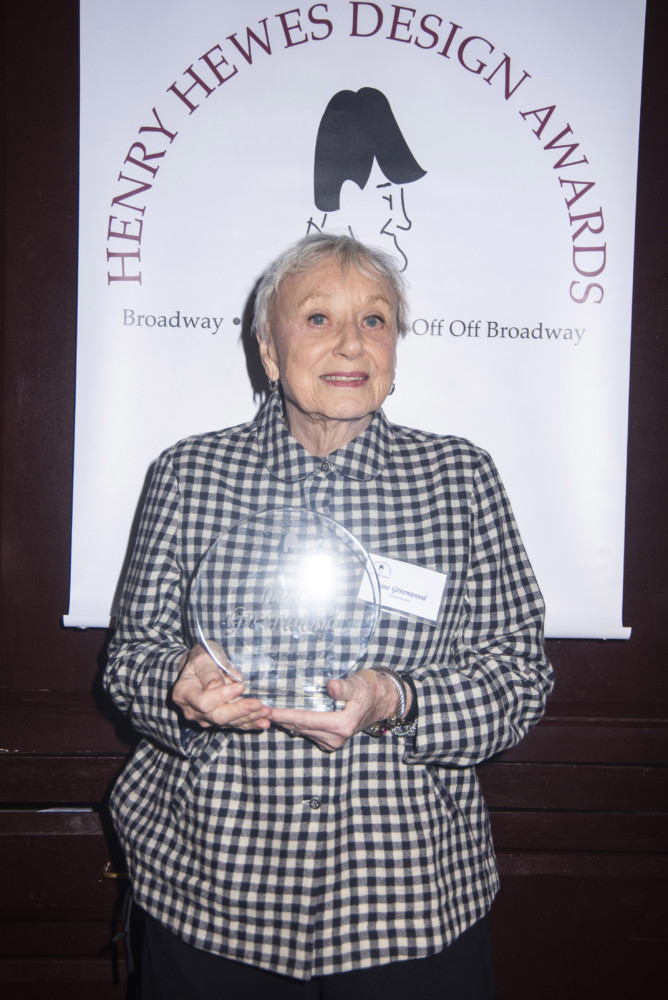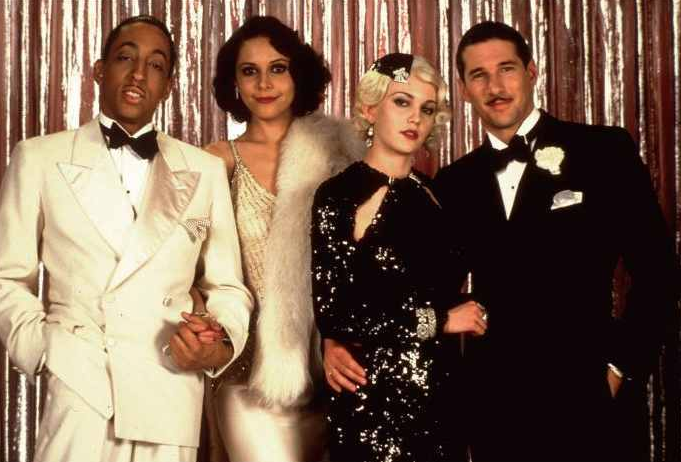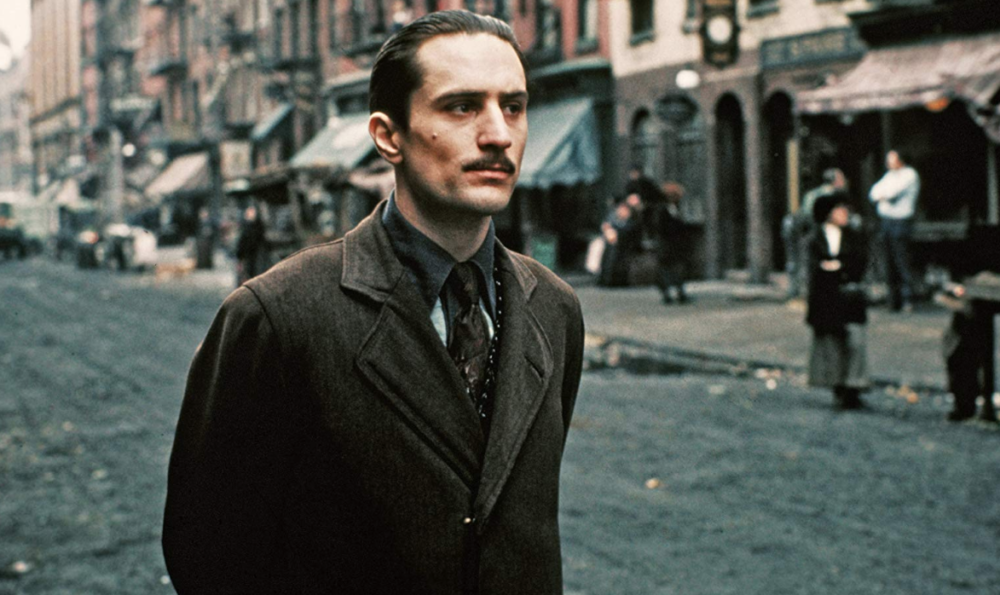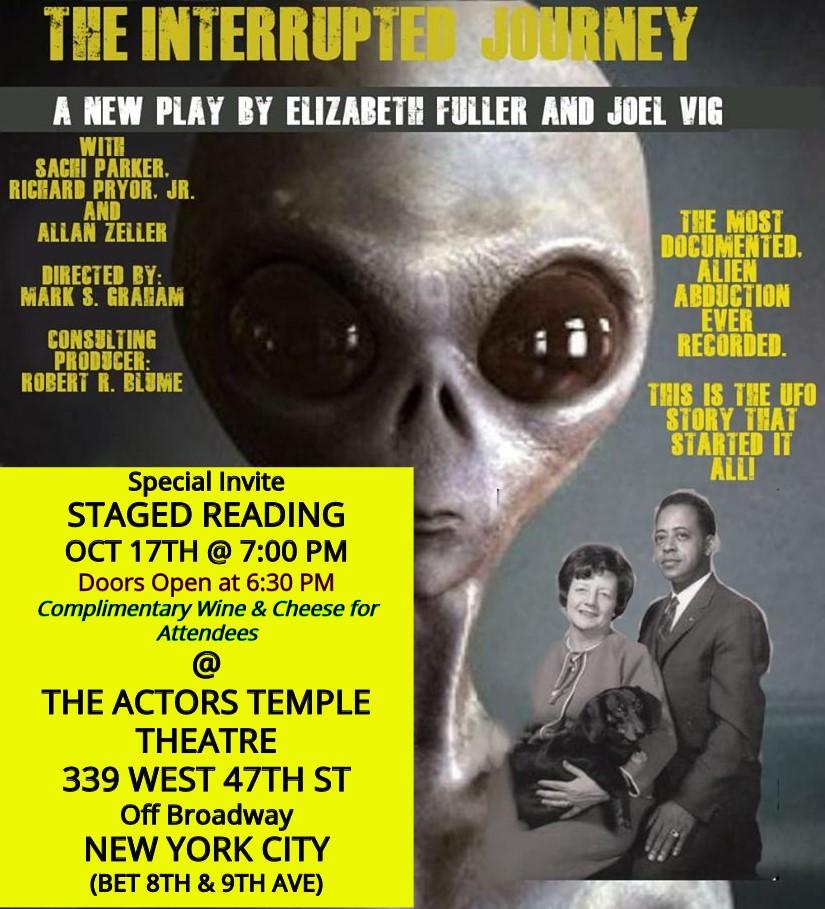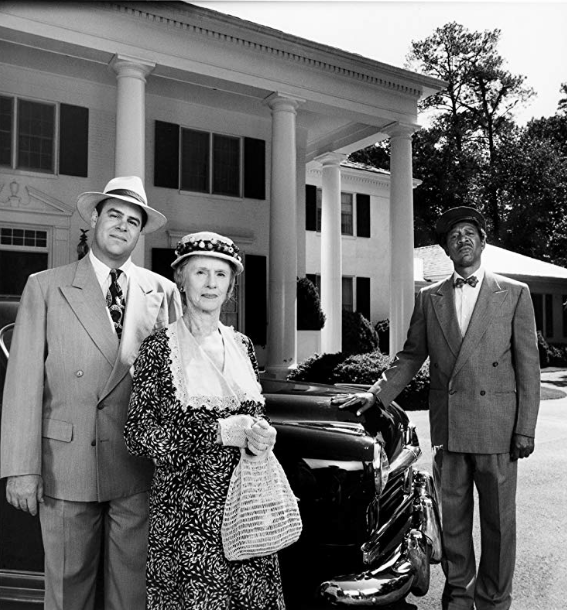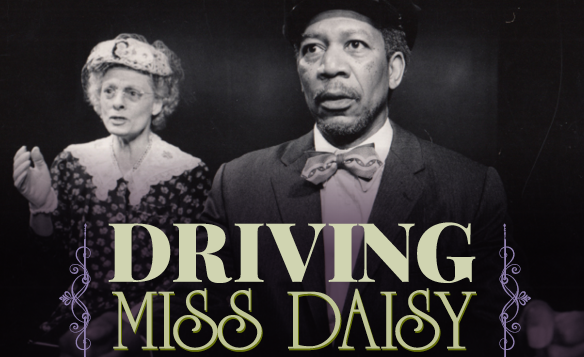An Amusement Column


Charlie Corcoran, Yi Zhao, Amith Chandrashaker and Montana Levi Blanco: new to the club (Photo Monica Simoes)
by Harry Haun
HEWES-FUSED NEWS: When he reached his 20th year as theater critic for Saturday Review, Henry Hewes II was only 55 but opted for premature retirement. Henry Hewes I had passed away at 56, and Henry II decided not to press it. He lived to be 88 and remained an active theatergoer for all of it. Even in his advanced years, he was usually the first to tear up the aisle and hit the exit. He didn’t brook much for applause or ovations, but he did have an acute appreciation of theater design, and this is the legacy he left behind. All this information came from Henry Hewes III, my tablemate at The 55th Annual Henry Hewes Design Awards ceremony, held at The Palm Restaurant and presided over by Jeffrey Eric Jenkins, the HHDA chairman. . . . Save for a piddling of press, the place was packed with the crème de la crème of the theatrical design community–Jules Fisher, William Ivey Long, Susan Hilferty, Scott Pask, John Gromada, et al—sort of a generous “Welcome to the Club” gesture to the 2019 recipients. . . . All five of them were newbies, receiving their first award from the Hewes committee and receiving it for Off-Broadway productions: scenic designer Charlie Corcoran for The O’Casey Trilogy at Irish Rep, costume designer Montana Levi Blanco for The Public’s Ain’t No Mo’; lighting designers Amith Chandrashaker for Signature Theater’s Boesman and Lena) and Yi Zhao for New York Theater Workshop’s The House That Will Not Stand, and sound designer Mikaal Sulaiman for Soho Rep’s Fairview. . . . But the piece de resistance of the event was the Ming Cho Lee Lifetime Achievement Award that went to costume designer Jane Greenwood, who started designing for Broadway in 1965, the same year Henry Hewes started passing out awards. Indeed, the lady from Liverpool was first in line to receive his costume award for Tartuffe while the scenic design honors were shared by Boris Aronson for Fiddler on the Roof and Ming Cho Lee for Electra. . . . Catherine Zuber, one of many designers Greenwood took under her wing, pointed out “a certain symmetry” to this new award in introducing the honoree. “With more than 130 Broadway productions and 80 Off-Broadway productions to her credit,” Zuber said, “Jane Greenwood has, with great skill and extraordinary artistry, consistently created costumes that have totally enhanced whatever story is being told. Whenever you think about dramaturgy or storytelling in relationship to costumes, she is the first artist who comes to mind.” . . . Until recently, Greenwood has been teaching the next generation of costume designers at the Yale Drama School, so she asked–“just to give me a little moral support”–for some of her ex-students who were in the room to stand. A flock of them proudly obliged, and some were name-brand designers. . . . “I think about Ming a lot,” she admitted. “For the 43 years that I was teaching at Yale, I spent many hours with Ming, and those trips to New Haven on the train were always interesting.” . . . Now the retired schoolteacher will fall back on Broadway, “doing something I really love to do.” Already she’s pondering what to create for Sarah Jessica Parker and Matthew Broderick for their upcoming Plaza Suite stint. . . . Because she has always favored fidelity to text and period over flash and dash, Tony Awards tend to whiz past her without blinking. She’s been called “the Susan Lucci of Tonys”—then Lucci actually won an Emmy. In 2014, out of guilt or neglect, The Broadway League honored her with a Special Tony for Lifetime Achievement in the Theater. . . . Three years later, just to show them, she won her first competitive Tony for The Little Foxes. It was her 21st time at bat. Who else in theater has Lifetime Achievement Awards that outnumber competitive Tonys?
RAT-A-TAP-TAP: Producer Robert Evans dreamed up the notion of incorporating the two most popular ingredients of ‘30s movies—musicals and mobsters—into one great big noisy epic and was even going to make his directorial debut with it. But, at the last moment, in a move he would profoundly regret, he turned the project over to writer-director Francis Ford Coppola. Coppola took the reins with a vengeance, restaffed the picture with his people and eventually barred the bothersome Evans from the set. (They had clashed during the Godfather filming, and Coppola would only agree to do the sequel if Evans had no involvement in it at all). Eventually, Evans sued to get a flat fee and a producer credit for The Cotton Club, yielding complete creative control over the film to Coppola. It remains one of the most contentious, and litigious, films ever made and, sadly, the warfare shows on the celluloid. . . . Over the weekend, it surfaced at the New York Film Festival in its Encore slot, restored and supposedly “reawakened.” Thanks for the 12 recovered minutes, but nothing helped. The damage had been done. The movie zigzags meaninglessly, almost monotonously, from gang hit to song hit without picking up any characterizations or heft along the way. It’s like what Japanese POW camp commander Sessue Hayakawa told British colonel Alec Guinness in The Bridge on the River Kwai: “Be happy in your work.” . . . There were no complaints about the second Saturday offering of Coppola’s—the middle installment of his magnificent Godfather trilogy. . . . When a sequel was first suggested after the success of the first film, Coppola joked he’d only do Abbott and Costello Meet The Godfather. Happily, he reconsidered, and The Godfather: Part II became the first of two sequels to win an Academy Award for Best Picture (the other: The Lord of the Rings: The Return of the King in 2003). . . . Vito Corleone was an Oscar-winning role for two actors–Marlon Brando in 1972 and Robert De Niro in 1974—but De Niro did it the hard way: save for eight words of English, his work as a younger, still-Sicilian version of Brando’s character was a phonetically learned performance; Anna Magnani resorted to the same trick to win her Oscar for The Rose Tattoo. . . . Stage actor John Cazale only did five films in his lifetime (The Godfather, The Conversation, The Godfather: Part II, Dog Day Afternoon and The Deer Hunter), but all five were Oscar-contenders for Best Picture, and three actually won the award. In the Godfather films, Cazale played Fredo, the weaker, ineffectual brother who wound up betraying his family. It must have been a pretty persuasive performance: If a hot-and-bothered Chris Cuomo is to be believed, the name Fredo has evolved into a pejorative word for Italians. . . . Conspicuously missing in action in the sequel is the stocky, loyal capo, Clemenza, who garroted Luca Brasi and taught Michael Corleone how to shoot a cop. In the sequel, he too was set to betray the family. But, during the two years between Godfather filmings, Richard S. Castellano, who played the part, shed 50 pounds, decided he should write his own dialogue and demanded a huge salary increase. Instead of paying twice as much for half as much Castellano, Coppola merely changed capos—from Clemenza to Frankie Pentangeli—and cast A Hatful of Rain playwright Michael V. Gazzo in the new part the day before filming started. Gazzo, who was of comparable Castellano size, rewarded him with an Oscar-nominated performance. . . . Part II wound up with twice the Oscars (6) as the original film. . . . When it comes to genre-jumping, author-actor Joel Vig is a master mixer. A play he wrote with Elizabeth Fuller, The Interrupted Journey, is having a staged reading Oct. 17 at The Actors Temple. It is based on the most documented incident of human abduction by space aliens ever—an odd little event that occurred to Barney and Betty Hill in 1961. James Earl Jones and Estelle Parsons played the captive couple in a 1975 TV movie blandly tagged The UFO Incident. For the reading, Richard Pryor Jr. and Sachi Parker do the roles. . . Vig just returned from premiering his solo show in Monroeville, AL in the very courtroom where Harper Lee’s Atticus Finch-like father practiced law. It’s called Truman Talks Nelle Harper Lee. The last time he “played the courtroom” Harper Lee was in attendance, watching him and Patricia Neal perform his version of Truman Capote’s A Christmas Memory. It was the first, and last, time she set foot in that courtroom since she gave Gregory Peck a personal tour before filming began on To Kill a Mockingbird. . . . Oscar winner Parsons, who rode with the Barrow gang back in ’67, is still acting up a storm at 91. Next is Tony Kushner’s A Bright Room Called Day, opposite William Esper’s son, Michael, and Meryl Streep’s daughter, Grace Gummer, at The Public, starting Oct. 29.
SOUTHERN-FRIED PULITZERS: Driving Miss Daisy, playwright Alfred Uhry’s account of the actual friendship that gradually, grudgingly, evolved between his cranky granny (Southern Jewish) and her heroically patient chauffeur (African-American) in midcentury Atlanta, just made a very special U-turn and is coming back to town—to The Kaye Playhouse–Nov. 11 for a one-night only presentation benefiting The Acting Company and starring the cast that introduced it to the world 32 years ago: Dana Ivey and Morgan Freeman. The son who sets up this strained chauffeuring service will be played by Walter Bobbie, who understudied the late Ray Gill in 1987 and subsequently turned Tony-winning director of Chicago. . . . Uhry’s drama is the only Off-Broadway play ever to win a Best Picture Oscar (1989’s), and it’s only the second Pulitzer Prize play with that distinction (You Can’t Take It With You got there first). . . . It is also the last Best Picture winner with a PG rating. . . . Bruce Beresford, an Australian director who specialized in stories set in the American South, didn’t rate even a nomination, begging the question: “Who did the driving for Driving Miss Daisy?”. . . . Freeman reprised his part in the movie, earning Golden Globe and an Oscar nomination for it (the actual Oscar and God roles came later). . . . A major-league catfight loomed over the title role—Bette Davis, Katharine Hepburn, Elizabeth Taylor, Lucille Ball, Angela Lansbury (who actually did play the part later in Australia with James Earl Jones and Boyd Gaines)—but the part went to a sleeper candidate who was the most age-appropriate: Jessica Tandy. It was the least Hollywood could do for Broadway’s original Blanche DuBois. . . . At 81, she remains the oldest winner of the Best Actress Oscar. Christopher Plummer subsequently became the oldest winner (82 at the time of Beginners)–and the oldest nominee (88 at the time of All the Money in the World)–for Best Supporting Actor. Topping that is James Ivory, 87 when he won Best Adapted Screenplay for Call Me by Your Name. . . . A little inside joke of Uhry’s: in scripting his three-character play, he invented a daughter-in-law for Miss Daisy to grouse about (“I hope she doesn’t take it into her head to sing tonight”) and got Patti LuPone to play it. . . . Driving Miss Daisy is the only one of Uhry’s “Atlanta Trilogy” to be filmed. The Last Night of Ballyhoo (1996) was about a family preparing for the Atlanta Jewish society cotillion, and, Jason Robert Brown’s Tony-winning musical Parade (1998), recalled the 1915 lynching of Leo Frank, a Jewish factory worker falsely accused of rape-murder. An earlier film version of this story, 1937’s They Won’t Forget, offered up 17-year-old Lana Turner as the voluptuous sacrifice for cinema. . . . The Young Man From Atlanta, Horton Foote’s Pulitzer Prize winner which is getting a Signature Theater re-airing (Nov 5-Dec.8), is set in 1950 in Houston where a sixty-something couple contends with ill-timed unemployment and their son’s drowning—a death that might be a suicide. Naggingly, there may have been a reason for it. His roommate, the title character, is in town with answers, but they tantalizingly keep him at arm’s length, off stage, preferring not to know any awful truths. Are you following my drift? It’s the way Texans cope. Michael Wilson, a longtime specialist at Foote plays, directs a cast that includes Aidan Quinn, Kristine Nielsen, Devon Abner, Jon Orsini, Harriet D. Foy and Larry Pine. The last two have a one-block commute to work.


